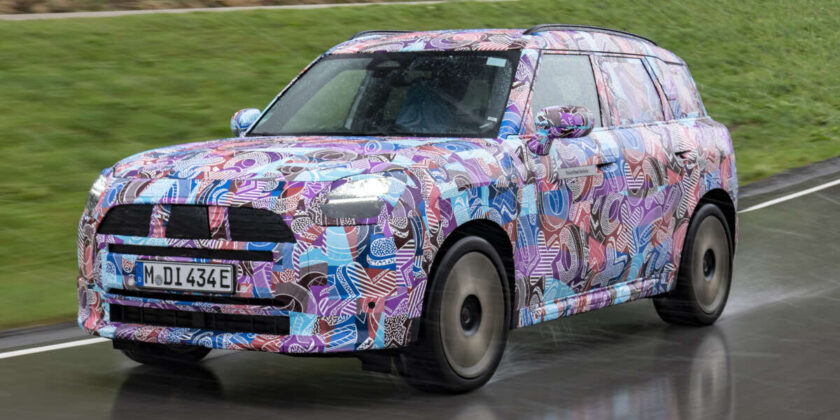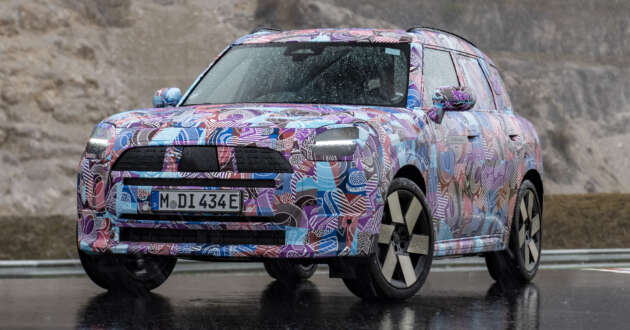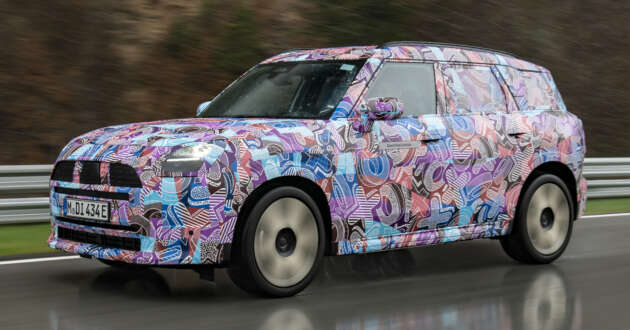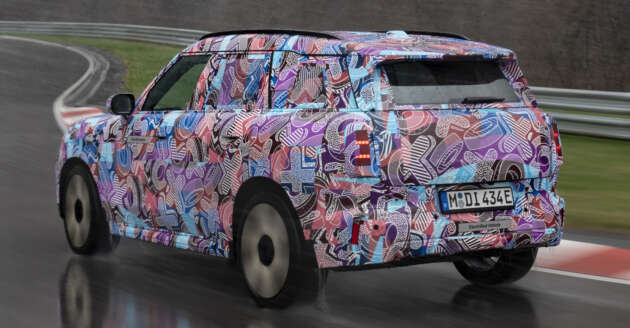Following a teaser at the beginning of last month, MINI has revealed that the upcoming MINI Countryman will become fully electric and will be offered in two variants, according to MINI. Compared to the existing model, the third-generation crossover is 13 cm longer at 4,429 mm and has also grown almost 6 cm taller to 1,613 mm, which benefits headroom in the cabin, according to the company.
Production of the all-electric, third-generation MINI Countryman will commence in November this year at the BMW Group plant in Leipzig, Germany, and thus marks the first time a MINI model is produced in the country.
The aforementioned two variants of the upcoming Countryman will consist of the Countryman E, which packs a single-motor powertrain producing 191 hp sent to the front wheels, and the Countryman SE, featuring a dual-motor powertrain that outputs 313 hp driving all four wheels.
Powertrain for the Countryman SE is likely shared with the BMW iX1, which is currently offered in a sole xDrive30 variant. There is currently no single-motor variant of the iX1, so given that the BMW and MINI crossover models share the UKL (Unter Klasse) platform for transverse-engined models, the Countryman E could offer a glimpse at what a future ‘sDrive20’ variant of the BWM iX1 could offer in terms of powertrain.
Both the single-motor Countryman E and dual-motor Countryman SE are powered by a 64.kWh battery pack; range is quoted as an estimated 450 km, which is likely to be the best figure between the two variants as offered by the more modestly powered single-motor variant.
The upcoming third-generation MINI Countryman is touted to have greater environmental consideration in its production, in addition to offering zero tailpipe emissions. This is achieved through doing away with “all decorative elements in the exterior and interior”, while its cast-alloy wheels are manufactured from 70% secondary aluminium, says MINI. The manufacturer’s use of green electricity also enables significant reduction of CO2 emissions compared with conventional processes, it said.
On the interior, recycled polyester sourced from PET bottles and carpet remnants are used to produce the surfaces of the dashboards, steering wheel, vehicle headliner and floor as well as its floor mats, here enabling the reduction of CO2 along the value chain by up to 85%, says MINI.
Beyond the vehicle itself, the Leipzig plant where the Countryman will be produced from November this year incorporates four 190 m-tall wind turbines for the generation of more than 20 GWh of electricity from wind power annually.
The on-site battery farm houses up to 700 second-life high-voltage batteries previously from BMW i3 vehicles, which store energy generated by the wind turbines. On-site energy storage enables the optimisation of local energy management, while helping keep the electricity grid stable, says MINI.
Source: Read Full Article



